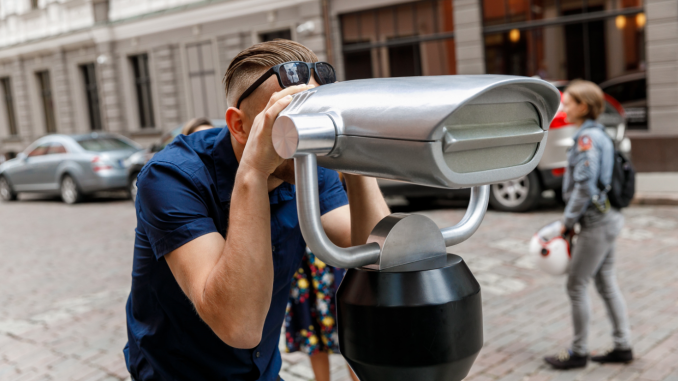
The 360 VR video can be viewed here: https://youtu.be/XnnGzO7HEoU
A Lithuanian solution – among the first in the world
The solution created by the Lithuanian company Nonsense.tv is one of the world’s first historical scenes in cinema-quality virtual reality. According to the idea’s author and implementer, Augustinas Katilius, it was precisely the combination of modern VR technology with the professional quality of filming used in the world of cinema that creates a highly authentic living picture of Riga early in the last century.
“In the course of one minute, viewing the visual space of Dome Cathedral Square from all angles, you see what the buildings, pavement and transportation looked like a hundred years ago, how people dressed and interacted in the Riga of that time, and what sounds greeted those who went out into the street. It’s an invaluable cognitive and emotional experience that enables you, here and now, to find yourself in any century and feel its ambiance for yourself: the pace of life, colours, materials, texture and even moods,” Katilius says of the completed project.
The price of 1 minute of historical VR? 9 months of creative effort and the work of 160 people
Although the VR film of Riga a century ago lasts barely a minute, it took the creative group nine months to make. Katilius explains that filming in line with cinema-industry standards took one day, but that was done from eight different angles. The things that required the most time were the preparations for filming and then the editing. During filming, Dome Cathedral Square had to be closed all day. Ten times more props than is usual in filmmaking had to be readied and brought to the site. Given the insufficient quality of current VR cameras, the decision was made to use a professional cinema camera, and each standard frame in the footage is assembled from shots at eight different angles. Later they were edited into a continuous virtual reality sequence. During editing, parts of buildings that did not exist yet in Riga a century ago were removed and 3D technologies were used to recreate the authentic architecture of the time.
Altogether, a team of 160 diverse professionals worked on the “Riga Time Jump” project.
Rails were laid for a tram of the period and an early airplane took to the air
For the sake of authenticity, the creative group located a tram that previously travelled the streets of Riga. Rails had to be laid for it once again. Old carriages, which 100 years ago were the main means of transportation in the Latvian capital as in Lithuania also, were brought to the Old Town of Riga. And tremendous attention to detail went into the 120 actors’ historical costumes and accessories and recreating the pavement, the buildings, the sounds and the way people talked. Looking closely at the virtual Riga of a century ago, one will also notice a Farman 4 aircraft, one of the earliest planes, which at the time occasionally flew over Riga.
Broad use of the innovation in education and other areas projected
Although many efforts have been made to recreate one or another historical epoch, most of them failed, in Augustinas Katilius’s view, due to the thus far too poor quality of current VR cameras.
“The idea itself of recreating a historical scene is not new, but we’re among the first in the world to have combined the creative technologies of virtual reality with the demands for high quality that are applied to cinema. We hope to see a lot of ideas, both in Lithuania and elsewhere in the world, regarding which eras or key historical moments would be worth portraying in virtual reality. It’s important for anyone who wants to get acquainted with history to be able to personally experience the atmosphere of historical eras and events. Our hope is that this very solution will soon be used ever more widely in teaching, tourism and other areas,” Katilius stresses.
The VR clip of Riga a hundred years ago was produced on behalf of Live Riga, a municipal enterprise of the Latvian capital.
About Nonsense.tv:
Nonsense.tv is a production house with operations in Lithuania and Latvia that creates video advertisements for companies and organisations in those countries. The company gained fame for the popular “Insiders Guide to Riga” series of video ads intended to attract tourists to the Latvian capital. Nonsense.tv’s biggest clients include the bank SEB, the telecommunications companies Telia, Lattelekom and LMT, the retail chain RIMI, the financial services company 4Finance, Mezpils, the Riga municipal enterprise Live Riga, and CSSD (Latvia’s traffic safety agency), as well as Vilniaus Margarinas, Neste Pro Diesel, Aldaris and Švyturys.
